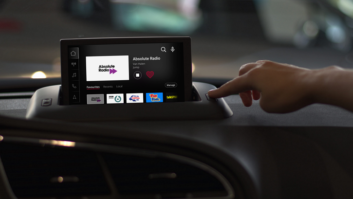Changes to Facebook’s News Feed algorithm are getting mixed reviews from radio experts who use the social media site to interact with their audiences. On the one hand, reaching people on Facebook will now require more effort and better content. On the other — to get good results — didn’t it always?

Just after the holidays, Facebook founder Mark Zuckerberg announced changes to the secret formula that prioritizes which posts reach more users. They’re gradually giving more emphasis to posts from family and friends, and less to brand pages.
Zuckerberg posted that his goal in 2018 is “protecting our community from abuse and hate, defending against interference by nation states, [and] making sure that time spent on Facebook is time well spent.”
So, is reading posts from your radio station “time well spent”?

“I have long advised brands to be more meaningful with Facebook audiences. The more meaningful we are, the more memorable,” says Cumulus VP of Social Media Lori Lewis. “The more memorable we are, the more it means we resonate and are likely increasing tune-in’s to our radio stations.”
Facebook’s precise formula for determining which content gets wider distribution isn’t shared publicly, and it’s constantly being adjusted — probably more often than we know. Although frustrating to content creators and publishers, that lack of specificity makes it virtually impossible to game the system. Facebook did reveal that they’re no longer measuring their success by how much time people spend on the site but by engagement, how much people interact with posts and each other. So if comments, conversations and shares are what Facebook measures, it should — logically — be your goal as a publisher, too.
VIDEO CONTENT
Watching video on Facebook is, by definition, a form of engagement.

“Videos where our talent are just being themselves tend to get the most eyeballs,” says Tony Lorino, program director for Atlanta’s WSTR(FM). Listeners can truly watch his radio station on Facebook. Producers for the “Jeff and Jenn” morning show are good at adding video components to what happens in the studio. (Check out their interview with pop star Nick Jonas, https://tinyurl.com/yclwvlp9.)
Other dayparts are seen on Facebook, too. “Heather Branch, our midday host, has a knack for speaking naturally to the camera, almost like a ‘Real World’ MTV confessional.” Afternoon host Mike Marino really knows how to deliver a punchline on camera.
News radio is also using Facebook to deliver videos. At KTAR/Phoenix, Assistant News Director Martha Maurer hosts them, especially during breaking news events (https://tinyurl.com/y7qur8d8).
Improving the quality of your station’s Facebook videos can stretch your reach. It’s not that expensive to do, as I explained in a recent 21stCentury PD column (https://tinyurl.com/y8cwfusq).

For stations like KTAR, Facebook’s changing priorities appear to be good news, judging by a Zuckerberg post on Jan. 29. “I hope that he follows through É to reward those who deliver credible, important and local content,” says Bonneville/Phoenix VP/Content & Operations Ryan Hatch.
As he studies their engagement stats, Hatch has come to believe that the quality of posts matters more than the quantity. At least for now, he says, “We’ve moved from an average of 10 or 12 posts per day per station to about six to eight.”
Lorino has noticed that his Facebook users in Atlanta love to post about themselves. “We’ve had two ‘snowstorms’ this winter — under 2 inches each, but we’re in the south, y’all, so that qualifies as a ‘storm’ — and asked people to share pictures of snow in their yards. That caused a lot of engagement É and shivers.”
Meanwhile, the increased priority on content from friends has caused some concern among advertisers who use Facebook.

Long before these changes, Bonneville/Phoenix VP/Business Development Jim Knapp observed, “The marketing theory pendulum is swinging from narrow targets back to mass marketing and an emphasis on creative that drives recall and favorability.”
That being said, Knapp uses paid Facebook posts to help drive awareness of native advertising campaigns on KTAR.com and ArizonaSports.com. “We think that’s a good use of client budget and fits in nicely with the fact that our audiences come to us for information, insights and opinion.”
Cynics might say that requiring more spending by brands is exactly what Facebook has in mind, that radio’s “free lunch” is over. But Facebook never was free. There’s always been an unwritten agreement: Your station adds to the Facebook user experience and, in return, they let you post there — using your brand name.
Then again, even if Facebook wasn’t prioritizing content from friends, having your listeners think of you as a friend has always been a good thing! Among the friends in your own life, you probably don’t prefer to spend time with ones who are using your friendship just to ask for favors, but rather with friends who are always genuine and interesting, who listen to what you have to say, who are truly “engaging.”
As Lewis says, “It’s time we learn how to create conversation and become more of a moderator on Facebook.” In other words, we need to post less about us, more about our audience.







